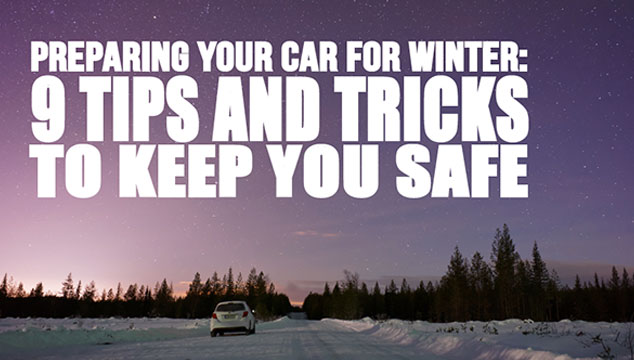
Even if you know every survival tip and trick in the book, it’s still important to avoid putting yourself in bad situations. Since survival is never guaranteed for those who find themselves stranded in the wilderness, it’s wisest to try to avoid such situations.
For example, let’s look at something as unremarkable as car trouble. Car trouble is never fun and can even be dangerous. However, car trouble can be especially problematic during the winter. You always want to make sure your car is prepared for the winter to avoid these added dangers. Stock your car with a few key items just in case the unforeseen happens.
The following nine tips and tricks should give you a good start, but don’t hesitate to add to this list as necessary:
1. Switch out your summer tires for winter ones.
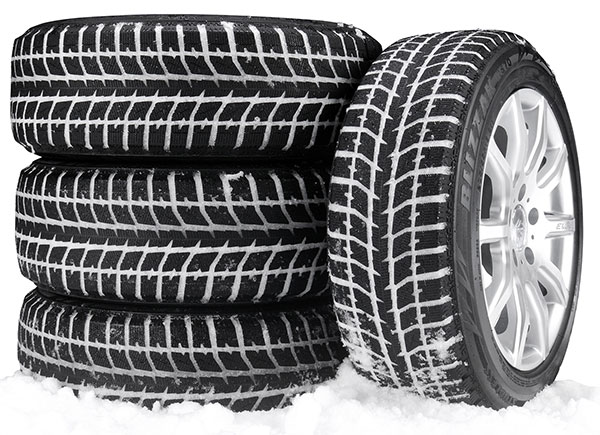
Good traction is imperative for those driving on slick, wintry roads. It can be the only thing standing between you and a car accident. The best way to ensure your wheels can grip the road is by swapping out your summer tires. They’re designed to provide traction during warm weather. Winter tires are designed a little softer and more flexible to ensure they remain in good contact with the road.
You may also want to invest in a good set of tire chains. They will give you much better traction than normal tires can. This is true even if you’re forced to drive across ice-covered roads.
2. Check your tire tread depth and pressure.
No matter what kind of tires you use, make sure they’re properly inflated and have sufficient tread. Check the tire pressure easily enough with a handheld air pressure gauge. You’ll want a tread wear indicator to check the amount of tread left on your tires. In both cases, follow the manufacturer’s recommendations and replace the tires whenever necessary.
Use the “penny test” if you don’t have a tread wear indicator. Simply insert a penny into the treads of your car tires with the top of Lincoln’s head pointing toward the wheel. Your tires require replacement if you can see the former president’s entire head.
3. Test your battery.
Low temperatures can wreak havoc on a car battery so it’s important to test it frequently. You run the risk of getting stranded if you don’t. It’s fairly easy to check your battery’s charge with a multimeter.
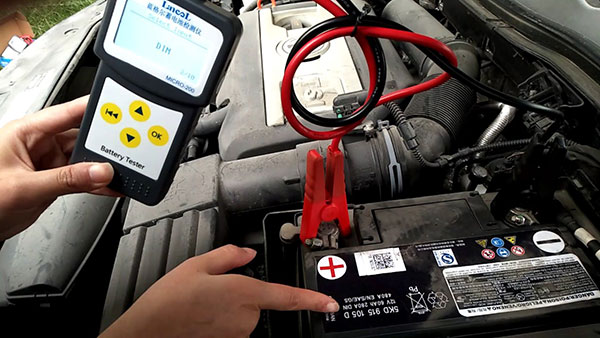
Attach the multimeter’s leads to your car’s battery terminals and take a reading. Test the battery while cranking the car and while it’s idling to be sure it’s operating properly. The battery should deliver at least 10 volts while trying to start the engine. It should be 12 volts or more while the car is idling.
4. Check your engine coolant levels.
Your car’s engine can freeze up and refuse to crank without enough antifreeze. This can leave you stranded and vulnerable to sub-zero temperatures. Check your car’s antifreeze levels before winter sets in to avoid issues. It’s generally easy to check the antifreeze level in your car. Some cars may need a simple tool from your local auto parts store to check it.
Be sure to purchase a type that is designed for the temperatures you’ll be in when adding more antifreeze. Also, be sure to mix the antifreeze correctly by following the instructions on the label to the letter.
5. Change your oil.
Different motor oils are designed to work within different temperature ranges. Use the best oil for the climate in which you live. As a rule of thumb, you’ll want to use thinner (low viscosity) oils in the winter and thicker (high viscosity) oils in the summer. This will give you optimum performance and engine protection. If you use a 10W-40 oil for most of the year, opt for 5W-40 oil during the winter. Just be sure to use an oil that is appropriate for your specific vehicle and don’t stray from the manufacturer’s guidelines.
6. Have a mechanic inspect the things that are beyond your skill level.
In addition to the winter specific adjustments, you’ll also want to inspect several other systems to ensure your car won’t fail during the frigid winter weather. Those wise in the ways of car maintenance can likely inspect these types of things themselves, but those who aren’t comfortable with cars should solicit the help of a certified mechanic.
You’ll want the mechanic to check the brake system, ignition system, hoses, belts, and spark plugs for your car. Most of these systems require regular maintenance and they are some of the most likely components to fail unexpectedly. Be sure to heed the mechanic’s advice and replace any worn or damaged parts immediately.
7. Assemble an emergency supply kit and store it in your car or truck.
Ideally your car should run smoothly if you thoroughly check and swap out the components listed above. This will prevent you from finding yourself stranded and shivering on the side of the road. Anything can happen though, even well-tuned automobiles can suffer from unforeseen malfunctions.
As a well-prepared motorist, assemble an emergency supply kit to survive these types of situations. You can make an emergency supply kit as elaborate and comprehensive as space allows. At the bare minimum, you’ll want to include the following items:
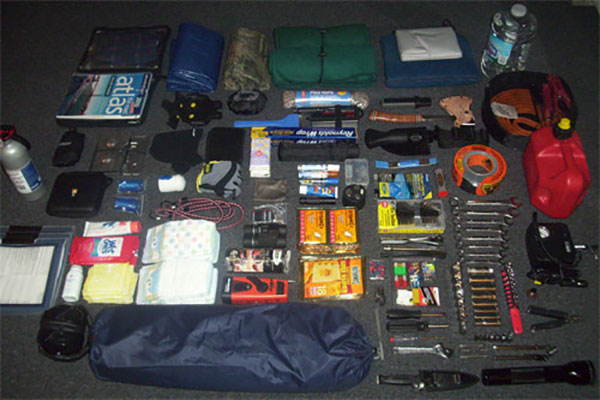
- Flashlight (and spare batteries)
- Cellphone charger
- Road flares
- Emergency water
- Emergency food
- Blankets (either conventional or Mylar)
- Shovel
- Ice scraper
- Bag of salt or cat litter
- Jumper cables
- Tow chain
- First aid kit
- Matches or lighter
- Knife
- Basic tool kit
- Spare tire, jack, and four-way wrench
- Emergency battery charger
If you have room for them, include any additional items in your emergency supply kit as necessary.
8. Enroll in a roadside emergency membership.
Even the best laid plans can fall flat, so it’s always wise to have an emergency backup plan. One great way to do so is by enrolling in a roadside emergency program. They’ll send a technician out to provide you with assistance in an emergency.
There are a variety of companies that offer such plans, so be sure to compare the various packages carefully. Don’t simply opt for the least expensive plan you can find. The cheap plan probably will only save a few bucks a month and you won’t care about these types of savings when stranded on the side of the road.
Be sure to read the membership agreement thoroughly before enrolling. Pay special attention to any clauses that relate to services provided in inclement weather. You don’t want to find yourself in need of assistance, but the roadside emergency service provider can’t help.
9. Keep your gas tank at least half-full.
Gas can be difficult to come by in some winter situations. Some roads may become impassable plus extremely low temperatures may even cause the pumping mechanisms at your local service station to fail. Particularly if you live in an area that is not prepared for severe winter weather.
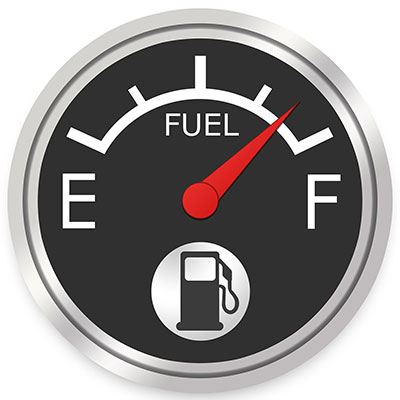
While it’s annoying to run out of gas at any time of year, it can be deadly to be stranded during very low temperatures. Most survival authorities recommend waiting with your car if stranded rather than trying to walk to a gas station. But if you’re far from help, there may be no choice but to set out on foot.
You can usually avoid these types of problems by simply refilling your tank anytime it drops down to the half full point. While it sounds like a good idea, don’t ever drive around with an emergency can of fuel as the potential for catastrophe is very real.
Final Thoughts
Have you ever found yourself stranded on a deserted winter road? What types of things did you wish for that would’ve make things easier? Do you take any precautions or make any mechanical changes that we didn’t mention above?
Let us know your thoughts and experiences in the comments below.
